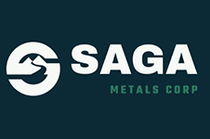Want to Buy Part of a Uranium Mine? Alliance Resources Selling 25-percent Stake in Four Mile
Australia’s Alliance Resources has put a 25-percent stake of the world’s newest uranium mine, the Four Mile project, up for sale.
It’s a sure sign that uranium isn’t doing too well when companies start selling … assets, that is.
This week, Australia’s Alliance Resources (ASX:AGS) put a 25-percent stake of the world’s newest uranium mine, the Four Mile project, up for sale.
In a press release, the company states that selling its interest in Four Mile will “free up funds to enable Alliance to further explore and expand its exploration portfolio, including but not limited to Australia and Chile.”
Alliance didn’t expand beyond that on its reasons for selling the stake; however, low uranium prices, as well as a soured relationship with project operator and 75-percent owner Quasar Resources (an affiliate of Heathgate Resources and California’s General Atomics) are likely the main factors.
Located in the South Australian outback, the Four Mile uranium mine started production in April with the expectation of making its first uranium sale in the third quarter of this year. The project has a resource of 71 million pounds; of that amount, Alliance is entitled to 17.75 million pounds. According to The Australian, the project is an in situ leach mine that will be ranked as the 15th-largest uranium mine in the world when it “hits its straps.”
The project’s cash costs lie somewhere in the area of US$40 per pound, which is not sounding too profitable given that U3O8 prices have just fallen to $28.25 per pound, according to UxC.
Alongside the price decline, Alliance and joint venture partner Quasar have not been seeing eye to eye, as the company noted in a quarterly report last year. Alliance is pursuing legal action — a trial against Quasar on the basis of misleading and deceptive conduct has been set for June 30, 2014.
Specifically, Alliance is seeking restitution for the 75-percent interest in the exploration license for Four Mile, citing, among other issues, Quasar’s failure to disclose information relating to the prospectivity of part of the tenement.
Uranium doldrums
Since 2011, the uranium market has not been faring as well as market watchers hoped. Uranium prices have been on a downward spiral since the Fukushima disaster, and though they held steady for some of 2013, they have since come down to $28.25, with the sad reality being that they could fall further.
Mining Australia notes that analysts are pessimistic, seeing a recovery only likely after 2021 due to an excess in uranium inventories.
At their current level, uranium prices are not sustainable to profitable production for most companies. Indeed, even Cameco (TSX:CCO) has deferred one of its projects until the pricing environment becomes more favorable. And, if producers are having a tough go at it, then surely the smaller development and exploration companies are also struggling to keep going.
If uranium prices do linger at these lower levels, it stands to reason that the market will be seeing less development of uranium projects and more shutdowns of producing projects. The bright side is that should that come to pass, then soon enough the oversupply story will become one of undersupply, leaving utilities scrambling to secure uranium for their reactors and creating a bigger push to revive the sector.
Securities Disclosure: I, Vivien Diniz, hold no investment interest in any of the companies mentioned.




